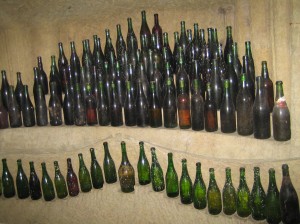Taste Memory
During my time at the University of Gastronomic Sciences from 2007-2008, I started thinking about the idea of taste memory. How is it that certain producers consistently make wines from year to year that have coherence in their taste? What role does taste play across generations of winemaking families? Could taste memory explain the coherence of specific wines from vintage to vintage? Is it taste memory that helps create the identity of specific wineries? What happens when there is a revolt against this memory? What other forms of taste memory exist and what role do they play in culinary identity? How are other taste memories preserved or not? Wine is a unique example of a much larger question of taste memory and its role in changing culinary tastes, which potentially have major nutritional repercussions. Because it can be conserved for many years, wine is a unique ‘food’ and cultural artifact: it offers an ample window onto the theoretical question of how tastes change over time.
I became fascinated by the Banca del Vino (wine bank) started by Slow Food. This very special cellar is located under the Pollenzo campus of the University of Gastronomic Sciences. The driving motivation behind the Banca del Vino is twofold. First, wines are aged longer than the usual release time so that consumers can enjoy them once they have aged enough to reach their maximum potential (a rare occurrence these days since producers and distributors cannot afford to cellar wines). Second, there is an extensive collection of old wines at the Banca del Vino that is intended to help preserve taste memory. These wines will help winemakers and those in the wine trade understand the taste of wine over the longue durée. One complication in this project is that wine is organic and continues to evolve over time–like human memory, wine’s sensory elements (color, scent, taste and mouth feel) change and fade as it ages. How does this biochemical evolution effect taste memory?
While conducting ethnographic research on wine in the town of Barbaresco, I was struck by a second instance of taste memory at work in the wine world: most wine producing families keep an “infernot” (a small cellar that is usually dug into the earth) and these cellars hold the families’ wine memories, which often consist of bottles dating back to the beginning of the family’s production history (usually the first half of the nineteenth century). These collections are important for reminding the current winemaker (often a family member) of the main sensory themes and they help give their wine a consistent style. Some producers described this as taste coherence. While there is talk of tradition in production methods, I started to wonder how much of these ideas about tradition are still driven by taste memory, even as technology increasingly factors into winemaking. Does tradition depend more on taste than method? If so, what has been the impact of taste fads, promoted and awarded by wine critics such as Robert Parker and the Wine Spectator, on the value of this historic record? Wine banks and private family collections can be seen as historical ‘documents’ that require a unique cultural interpretation involving the senses.
